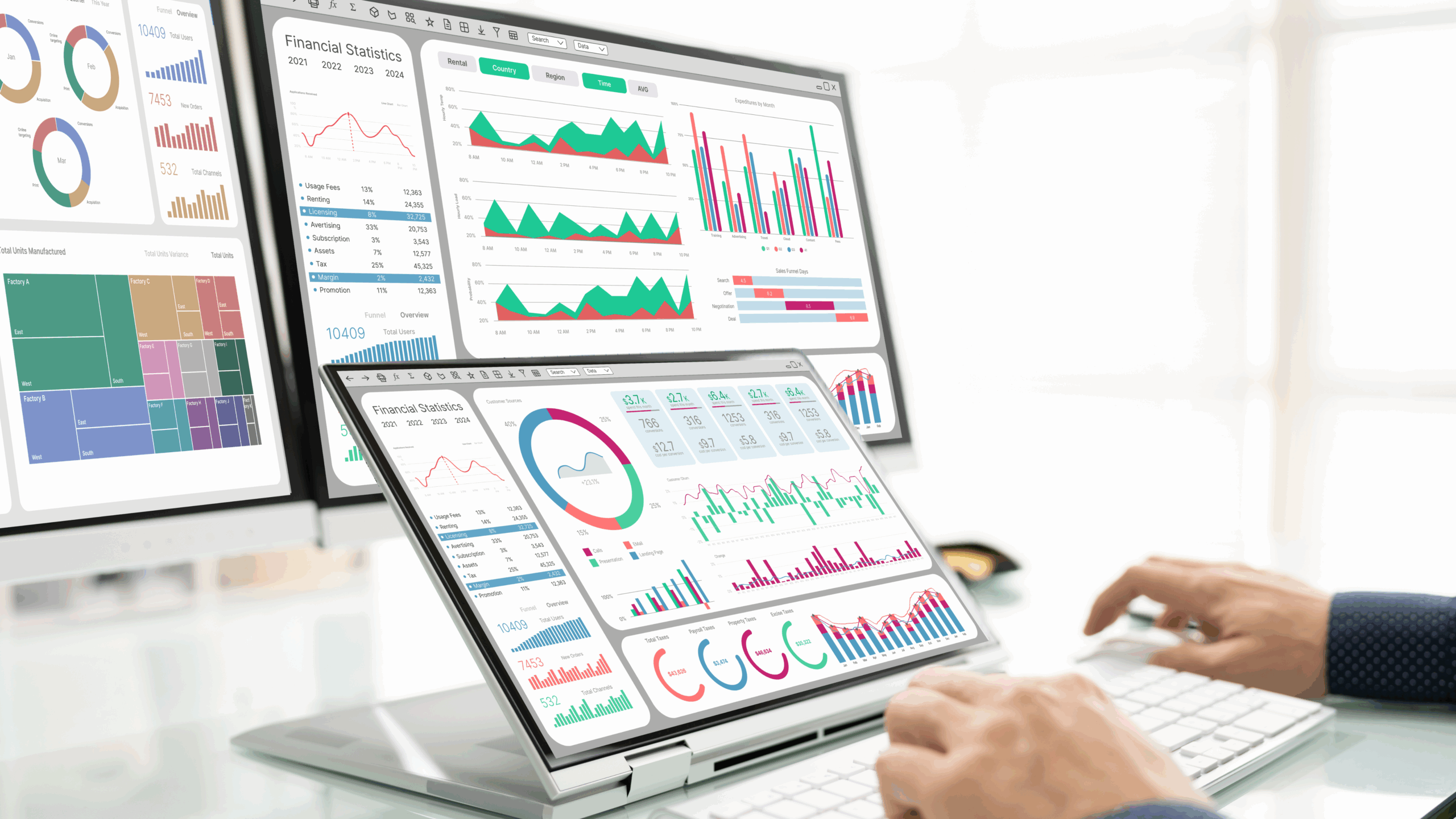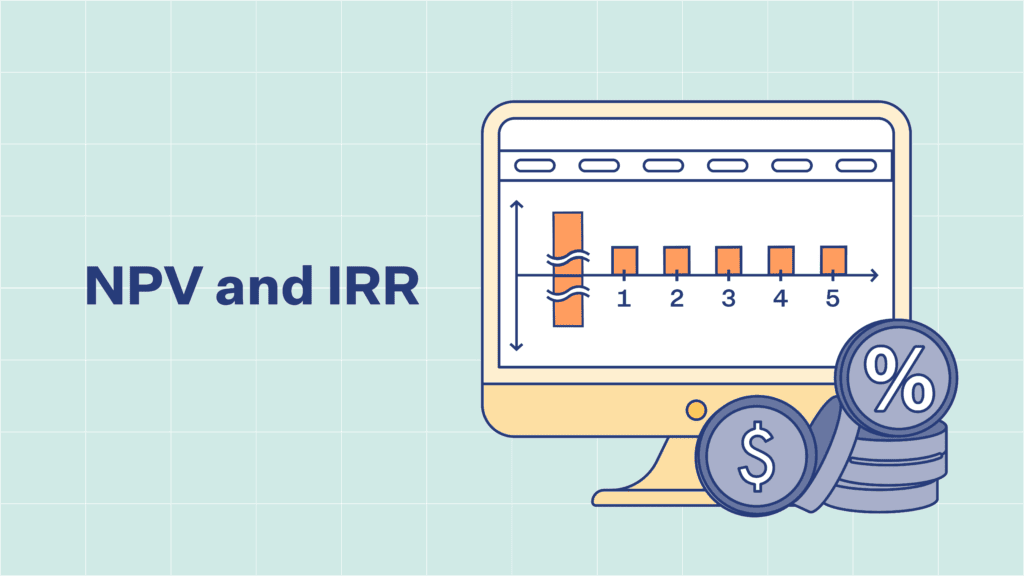Introduction
In today’s data-rich world, companies that embrace data analytics for business gain a competitive edge by transforming raw data into valuable insights. Rather than relying on intuition or outdated methods, businesses can use data-driven decision-making to evaluate performance, identify trends, and optimize strategies. This shift toward business decision-making with data analytics is essential for staying competitive, especially in dynamic industries like finance, energy, and infrastructure.
Using data analytics, businesses can track performance in real time, forecast future outcomes, and even predict potential challenges. For instance, FinWiser’s Discounted Cash Flow (DCF) Valuation Model allows companies to perform predictive analytics on future cash flows, making it easier to project financial outcomes and assess investment potential. By leveraging tools like this, businesses can make smarter financial decisions based on solid data, reducing uncertainty and supporting long-term success.
Throughout this guide, we’ll explore how data analytics in business enables smarter, faster decisions. From summarizing past performance with descriptive analytics to guiding future actions with prescriptive methods, tools like FinWiser’s Biogas Plant Financial Model and Solar PV Plant Financial Model offer structured approaches for applying analytics to decision-making.
Let’s dive into the ways data analytics empowers businesses to turn insights into action and achieve their strategic goals.
The Power of Data-Driven Decision-Making
Traditional decision-making often relies on experience, intuition, or historical patterns. While these methods have their place, data-driven decision-making brings a new level of accuracy and objectivity to the table. With data analytics, businesses can base their strategies on real-time data and comprehensive analysis, allowing them to make informed decisions that adapt to changing market conditions.
Data analytics in business can be applied in various ways, from improving operational efficiency to identifying new growth opportunities. For instance, by analyzing trends in sales, customer preferences, or industry benchmarks, companies can uncover insights that would otherwise remain hidden. Tools like FinWiser’s Discounted Cash Flow (DCF) Valuation Model support predictive analytics by allowing businesses to project future cash flows and evaluate potential investments with a high level of precision. This model from FinWiser provides a structured way to integrate historical data with predictive insights, enabling smarter, data-backed financial decisions.
Another powerful application of data analytics for business is understanding customer behavior. For example, using descriptive and diagnostic analytics to review past purchase patterns helps businesses make data-informed adjustments to products or services. Models like the Biogas Plant Financial Model offer valuable templates for scenario planning and evaluating various operational decisions, especially for industries that rely on long-term forecasting.
By embracing data-driven decision-making with tools from FinWiser, businesses can shift from reactive to proactive planning, making adjustments based on accurate data rather than assumptions. This proactive approach not only improves financial performance but also strengthens a company’s ability to respond effectively to market changes.
Key Types of Data Analytics
To make the most of data analytics in business, it’s essential to understand the four main types of analytics: descriptive, diagnostic, predictive, and prescriptive analytics. Each type serves a unique purpose, helping businesses analyze past performance, understand current trends, forecast future outcomes, and make data-driven decisions for growth.
Descriptive Analytics: Descriptive analytics focuses on summarizing historical data to understand what has happened in the past. This type of analytics helps businesses track performance metrics, identify trends, and gain insight into customer behavior. For instance, a company might use descriptive analytics to examine sales data over the past year to determine which products were most popular. Structured models like FinWiser’s Biogas Plant Financial Model provide templates for capturing and organizing data, making it easier for businesses to analyze historical performance and identify trends.
Diagnostic Analytics: Going one step further, diagnostic analytics looks into the “why” behind historical data. By examining correlations and underlying factors, diagnostic analytics reveals the root causes of certain outcomes. For example, if a renewable energy company experiences fluctuations in cash flow, using a tool like FinWiser’s Discounted Cash Flow (DCF) Valuation Model can help diagnose contributing factors. This model enables companies to analyze past financial performance and link it to potential changes in revenue or expenses.
Predictive Analytics: Predictive analytics is all about forecasting future trends. By analyzing historical data and identifying patterns, businesses can make educated predictions about what’s likely to happen next. For instance, an infrastructure company may use predictive analytics to forecast project expenses over the next five years. FinWiser’s DCF Model is ideal for this purpose, as it allows companies to project future cash flows based on historical data, supporting strategic decision-making around investments and resource allocation.
Prescriptive Analytics: The final stage, prescriptive analytics, goes beyond predictions to recommend actions based on data. This type of analytics is particularly useful for testing “what-if” scenarios and planning for different outcomes. For example, the Solar PV Plant Financial Model from FinWiser helps businesses in the energy sector explore various scenarios and make informed decisions about operations. By testing different assumptions, businesses can choose the best course of action based on data-driven insights.
By applying these four types of data analytics, businesses can better understand their past, diagnose current challenges, forecast future outcomes, and make informed decisions. With tools from FinWiser, companies can access structured templates that support each type of analytics, turning raw data into actionable strategies.
How Data Analytics Enhances Operational Efficiency
One of the most powerful applications of data analytics in business is improving operational efficiency. By analyzing data on processes, resources, and costs, businesses can identify inefficiencies, reduce waste, and streamline operations. This data-driven approach enables companies to maximize productivity while minimizing unnecessary expenses, making data analytics for business a vital tool for sustainable growth.
For example, let’s say a renewable energy company wants to optimize its supply chain to reduce operational costs. By using descriptive and diagnostic analytics, the company can identify patterns in supplier costs, shipping delays, and equipment maintenance requirements. This approach provides clarity on where resources may be over-allocated or underutilized, helping the company make adjustments that drive efficiency.
Predictive analytics further enhances operational efficiency by forecasting future resource needs, enabling businesses to plan ahead and prevent costly bottlenecks. FinWiser’s Discounted Cash Flow (DCF) Valuation Model can help companies project expenses and cash flow for upcoming projects, providing a clear view of how operational costs will evolve. This model allows businesses to adjust budgets and allocate resources strategically, resulting in optimized operations and smoother cash flow management.
Prescriptive tools, like the Biogas Plant Financial Model from FinWiser, help companies in high-cost industries test various operational scenarios. By evaluating potential cost adjustments or shifts in supplier terms, businesses can determine the best strategies for maintaining efficient, cost-effective operations. Using structured models from FinWiser enables companies to not only track their performance but also implement data-driven changes that improve efficiency across the board.
By embracing data analytics, companies can optimize every aspect of their operations, from budgeting and resource allocation to inventory management and supply chain efficiency. Leveraging tools from FinWiser allows businesses to apply analytics at all stages of their operations, driving better results through data-driven decisions.
Driving Strategic Growth with Predictive Analytics
Predictive analytics has become a cornerstone for companies seeking to drive growth in a competitive landscape. By using historical data to forecast future trends, companies can anticipate customer behavior, market shifts, and financial performance, making it a critical component of data analytics for business. Predictive insights enable companies to proactively make adjustments, positioning themselves for long-term growth and success.
For instance, a company in the renewable energy sector may use predictive analytics to estimate future demand for solar or biogas energy based on historical consumption patterns and market trends. By leveraging tools like FinWiser’s Discounted Cash Flow (DCF) Valuation Model, the company can forecast cash flows and project revenue over the next few years, giving it a clearer view of potential growth opportunities. This model not only helps with financial forecasting but also supports investment planning, allowing businesses to strategically allocate resources toward high-potential projects.
Another example of growth-oriented predictive analytics is customer behavior forecasting. A retail company, for instance, might analyze past sales data to predict which products will be in high demand during upcoming seasons. By understanding customer preferences in advance, the company can optimize its inventory and marketing strategies, ensuring it captures demand effectively. Using structured tools like FinWiser’s Biogas Plant Financial Model also allows businesses to run scenario analyses that factor in potential market fluctuations, helping them make growth-focused decisions based on likely future outcomes.
By integrating predictive analytics into their business strategy with tools from FinWiser, companies gain valuable foresight into market conditions, enabling them to capitalize on opportunities and mitigate risks. This data-driven approach to growth not only helps businesses stay competitive but also builds a foundation for sustained success in evolving markets.
Turning Insights into Action with Data Visualization
The power of data analytics for business lies not only in gathering insights but also in presenting them in a way that’s easy to understand and act upon. This is where data visualization comes into play. By converting complex data sets into visual formats like charts, graphs, and dashboards, businesses can quickly grasp patterns, trends, and actionable insights. Data visualization for business insights simplifies decision-making, making it accessible for leaders who may not be data experts.
For example, a company evaluating multiple projects may use data visualization to compare the projected cash flows, costs, and returns of each option visually. FinWiser’s Discounted Cash Flow (DCF) Valuation Model offers built-in visual elements, allowing users to see how different cash flow scenarios would impact project viability. These visualizations make it easier for stakeholders to assess which projects offer the most value, ensuring smarter, data-driven decision-making.
Similarly, data visualization is useful for monitoring real-time performance. For instance, if a renewable energy company wants to track production costs over time, data visualization can show cost fluctuations in an easy-to-digest format, allowing for quicker adjustments. With tools like FinWiser’s Biogas Plant Financial Model, businesses can view visual summaries of financial data, helping them respond efficiently to emerging trends or cost variations.
By presenting data in visual formats, data analytics becomes a powerful tool for communicating complex insights to various teams and stakeholders. With models and visual tools from FinWiser, companies can transform their data into clear, actionable visuals that drive informed, confident decision-making across all levels of the organization.
Conclusion
In today’s competitive business landscape, data analytics has evolved into an essential tool for making informed, strategic decisions. By harnessing the power of data-driven decision-making, companies can gain valuable insights, predict future outcomes, and make adjustments that drive both operational efficiency and long-term growth. From understanding past performance with descriptive analytics to planning for the future with predictive techniques, data analytics transforms the way businesses approach decision-making.
FinWiser offers a range of models and tools designed to help businesses leverage data analytics effectively. With resources like the Discounted Cash Flow (DCF) Valuation Model and Biogas Plant Financial Model, FinWiser provides structured templates that allow companies to make data-informed choices at every stage of their operations. These tools not only simplify the data analytics process but also empower businesses to turn insights into actionable strategies.
If you’re ready to bring the power of data analytics for business into your own organization, explore the offerings from FinWiser. With FinWiser’s models, you can unlock smarter, faster, and more confident decision-making, positioning your company for success in a data-driven world.











